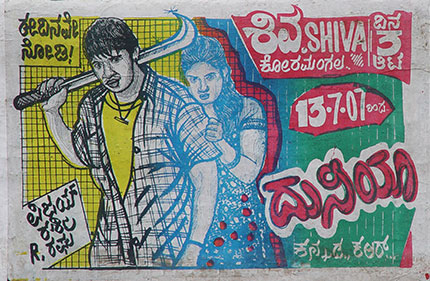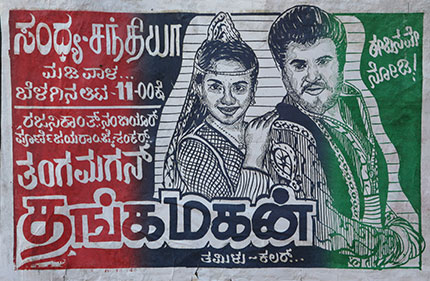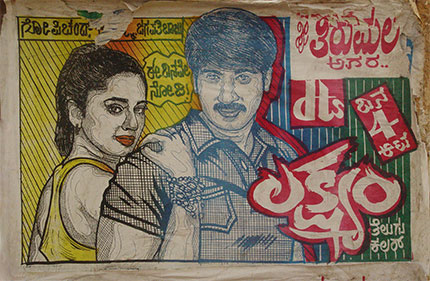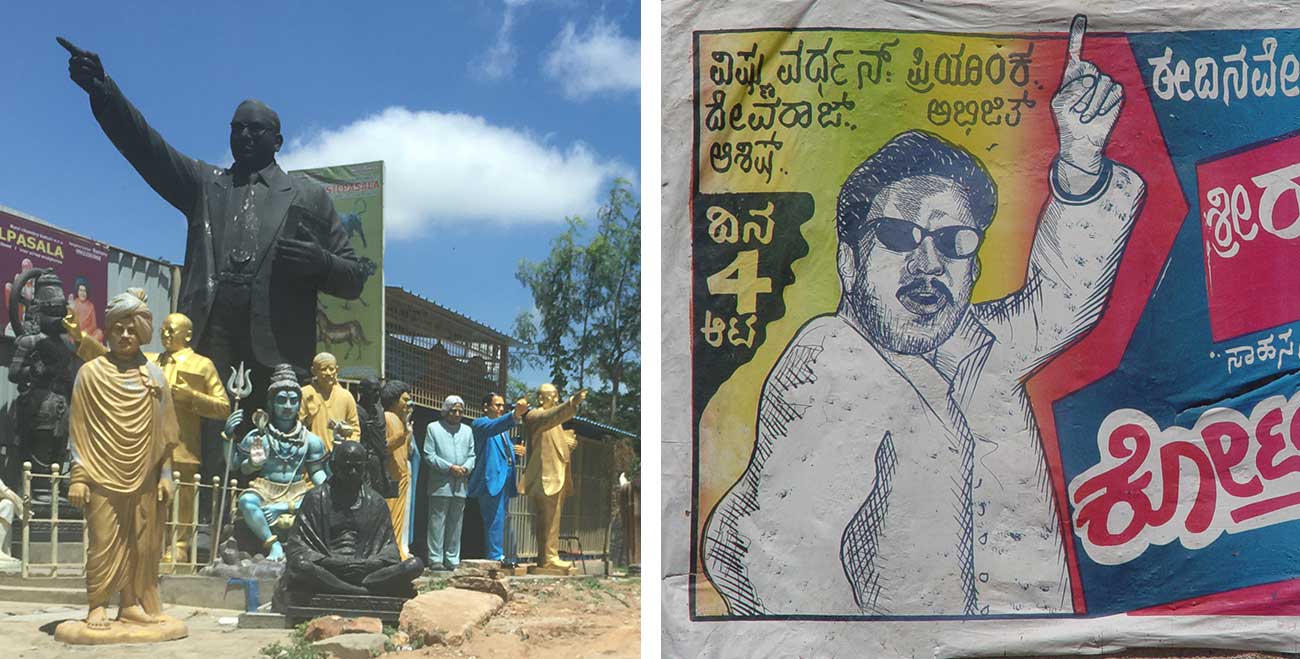One-Dimensional Masculinities, No More?
IS THE PHALLIC HERO IN DECLINE?
‘Complex, overlapping, disjunctive’,* these layered and ephemeral renderings unwittingly make visible what is hidden below the surface.
The streets in South India are places for performative displays of popular culture that exist in parallel with, and often in opposition to those in mainstream, controlled arenas. Depictions of men and manliness on film posters, statues of socio-political icons and advertisements for local gyms or garadi manes (wrestling centres), alternatively and together advertise escape, offer hope, salvation and homo-sociability. Masculinity in these cultural geographies is often depicted through physical strength, aggression and forcefulness, but also through images that convey patriarchy and protection.

As a starting point this continuing research examines the peculiarities and particularities of the small-format, locally screen-printed film poster – minimal and one-dimensional in rendering of text, image and message. Most of the images in this archive are from the 80s and 90s, and are not as visible today. Is this because production techniques have changed and wall spaces have become premium? Or is there a correlation with male identities changing and getting more framgmneted and ambivalent today as also portrayed by nuanced heroes in new-age, though populist, cinema?



If we see the hero at all with a woman, she is an accessory, draped on his shoulder while he continues his macho phallic hero posturing.
If we see the hero at all with a woman, she is an accessory, draped on his shoulder while he continues his macho phallic hero posturing.
Are these displays of maleness, masquerades – or do they have an essentialized nature? Do representations that encourage stereotypical narratives and phallic hero archetypes share an uneasy or comfortable co-existence with the emerging new renderings? Is the one-dimensional phallic hero in decline, or does he come in new avatars? Is essentialization a result of the limitations of the medium, a need for immediacy of messaging – or a desired, populist singularity and agenda?



